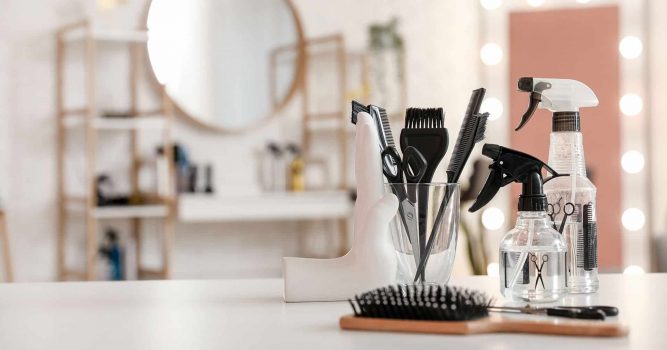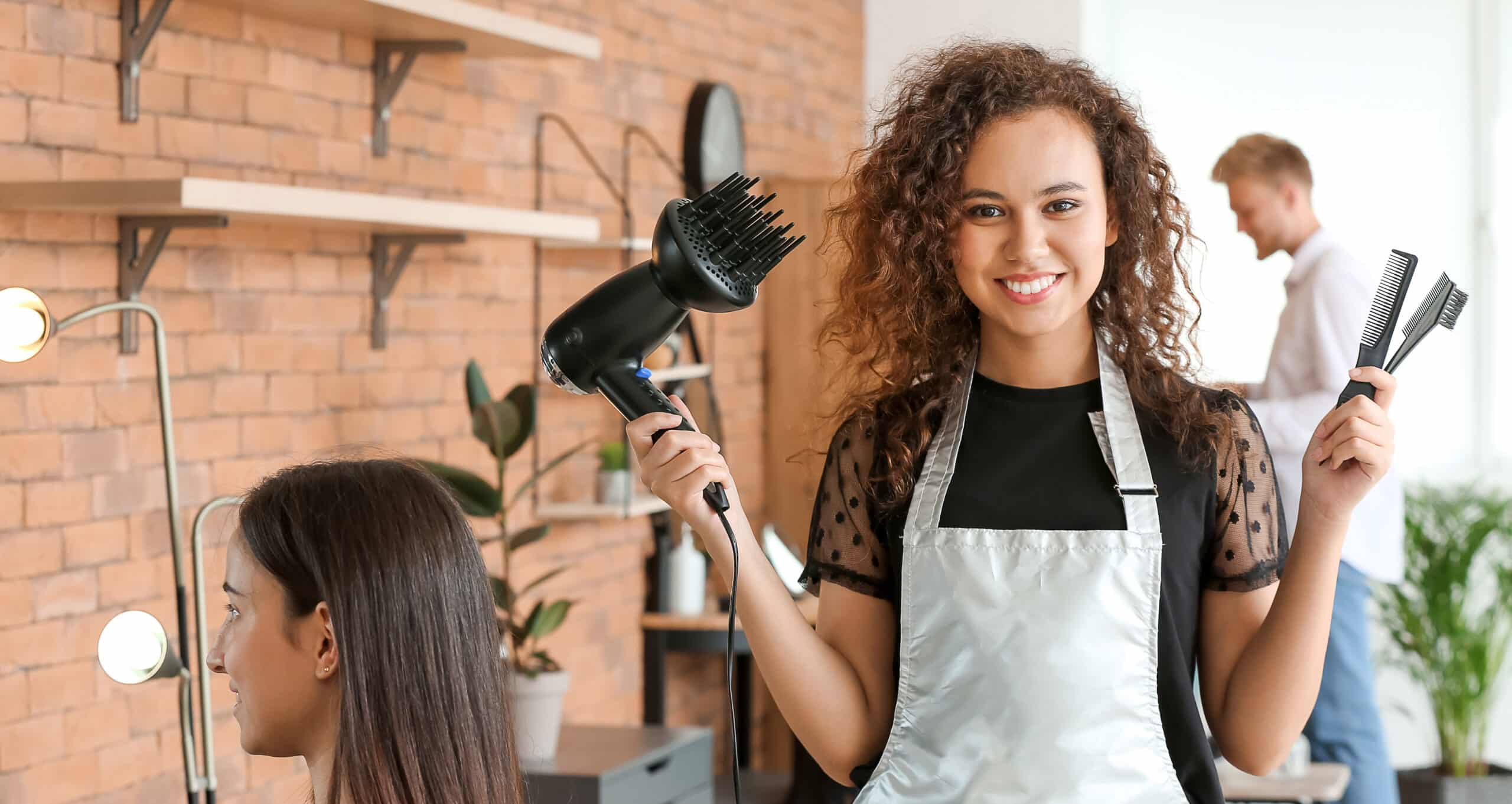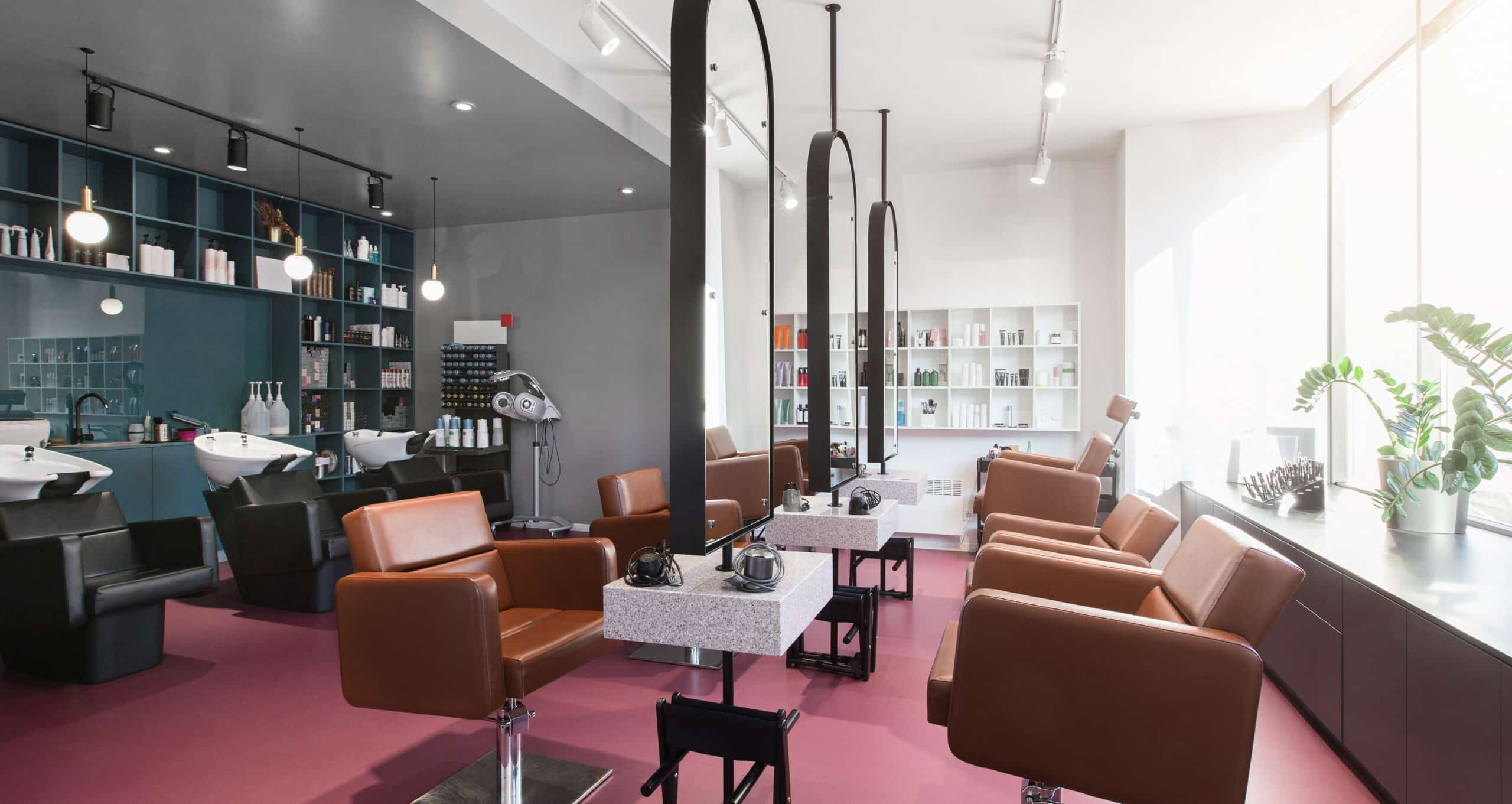Setting up your own salon is a great experience. You no doubt have many questions, though, like where to buy salon equipment.
Here’s a comprehensive guide to buying salon equipment. Learn about shopping and payment options as well as quality assessment. Plus, you get a list of some commonly overlooked salon equipment needs, including software for salon management.
What to Consider When Buying Salon Equipment
Buying salon equipment can feel overwhelming, especially if you’re a startup business. You want to make sure you have everything you need.
Basic Equipment and Furniture for Services
First, make a list of all the services you offer. You and your staff should know exactly what is needed to provide each of those services.
You’ll also have to figure out which pieces of equipment the salon is responsible for purchasing and which the employee brings with them. For instance, most hair stylists prefer to have their own apron of tools like combs and shears.
However, the salon provides chairs, mirrors, and workstations. Other items, like hair dryers or beard trimmers, may or may not come from the salon.
It’s helpful to draw a floorplan of the salon on paper so you can arrange the furniture for maximum efficiency. You’ll need workstations for things like haircutting, manicures/pedicures, and brow treatments. You’ll also likely want elements like:
- A reception desk for greeting and checking out clients
- Chairs or benches for a waiting area
- A changing area, if customers change into smocks, and lockers for securing guests’ items
- Extra seating for family members or clients between services
- Shelving or display cases for products for sale and a lockable storage area for inventory
- A coat rack or place for customers to hang their outerwear
- Sinks for hand washing, shampoo bowls, etc.
- Trolley carts to hold supplies for service providers
- A drying station for manicures and pedicures
- Tanning beds and spray booths
- Massage tables or beds for waxing
- Skincare machines and other electrical devices
- A place to keep towels and cleaning materials you use frequently
- Restroom and laundry equipment (hampers, trash cans, etc.)
- A break room for your staff
Your space can fill up very quickly, so you need to be thoughtful. Planning on paper first can save you a lot of time and back pain later.
You could also consider consulting with a space planner or interior designer to help you create the most functional layout for your business.
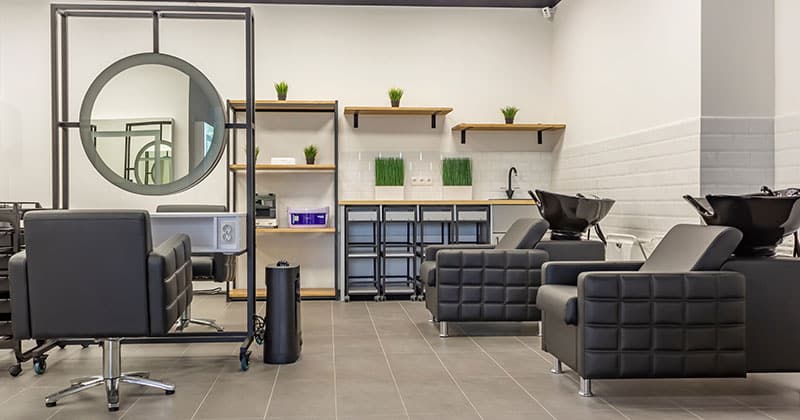
Equipment to Run Your Business
Don’t forget about other equipment you should have to keep the salon running smoothly. This includes hardware like phones and computers or tablets. You’ll need internet equipment as well, such as a router.
FROM ONE OF OUR PARTNERS: How to Accept Credit Card Payments On Your Phone (or Tablet)
Tech equipment also includes software designed for salon management. This will make operations easier and create a more VIP experience for guests. That’s a win-win, whether you’re expanding an existing salon or opening a new one.
You’ll probably need a cash register, as not everyone will pay online or with a credit card. And some salon customers tip with cash, so think about where that will be stored. (Encourage other options, though, as 65% of people will tip at least 11% more if they tip digitally.)
Along with those items, you’ll want things like a filing cabinet and office supplies for tasks not done online. You’ll need a way to display any required licenses or certifications too.
Walk through a typical day in your mind, and you may come up with more essential items.
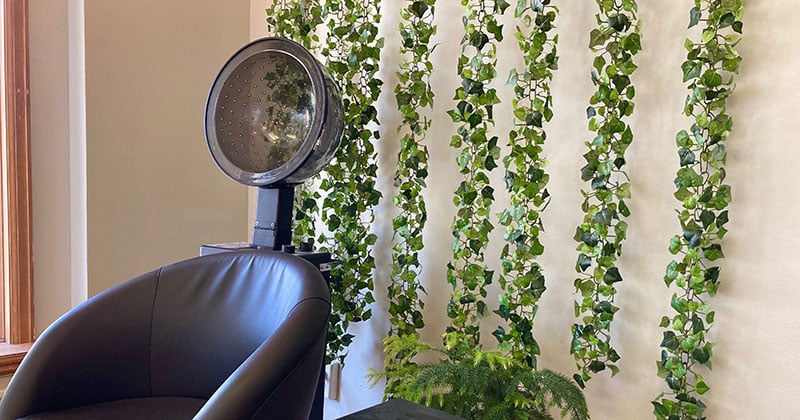
Decor and Design Elements
While not technically equipment, you’ll want to give a thought to big-ticket items that contribute to the appearance and vibe of your salon. They’ll also influence your budget (see below).
For instance, you may need extra lighting fixtures, artwork, and window treatments. These should match your major furniture pieces to create the overall desired effect.
You will also probably want to purchase a sound system. Providing background music can make your salon feel like a tranquil spa. Or it can seem like a vibrant contemporary destination for customers.
Make room for a compact beverage or snack area too. You’ll want to be able to offer clients a cold drink or cup of coffee. Therefore, you’ll probably need a kettle, coffee maker, and perhaps even a mini fridge.
RELATED ARTICLE: Owning a Hair Salon: Your Launch Guide
Budget and Payment Options
As you might imagine, furnishing a salon can rack up your budget pretty fast (more on budget below). Are you concerned about financial limitations? Try separating your shopping list into must-haves and nice-to-haves.
How will you be paying for your salon equipment? Don’t feel pressured to buy everything outright.
There are many options available these days for salons. You can lease equipment, often with an option to purchase later.
Renting salon equipment can be a great way to test out gear, provided you’re not committed if you decide you don’t like it. Be aware, however, that this may wind up costing more in the long run.
You may also finance major items with a loan, paying them off over time as your revenue grows. The benefit here is you own the equipment, which contributes to your business equity. Once the loan is paid off, the equipment is yours to do with what you will, including selling it to upgrade.
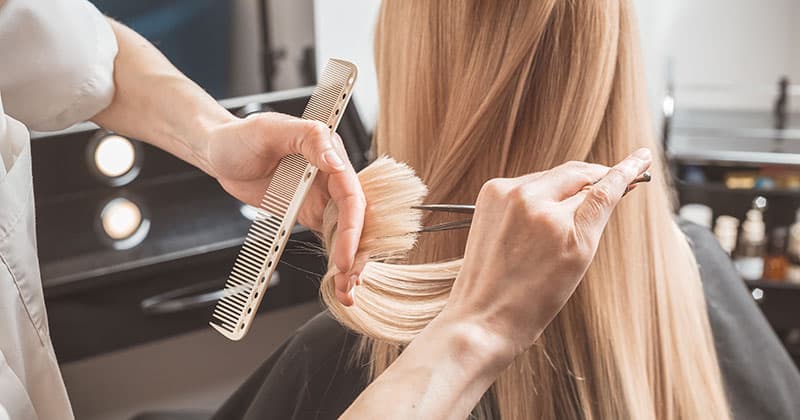
Key Features to Look for in Salon Equipment
When evaluating salon equipment for features and quality, what should you look for?
Above all, once you find equipment that matches your decor, you want durability. Your equipment is going to take a lot of wear and tear, and you need it to hold up.
Otherwise, you won’t be getting your money’s worth. Not only that, there’s the inconvenience of having to install new equipment. That could mean shutting down operations for a day or two, which translates to lost revenue.
Read reviews carefully, and look at the materials and fabrication. Do the pieces feel solid? Are they well constructed of sturdy components?
Be sure to check for these factors:
- Stitching, seaming, and joints (no gaps, loose parts, etc.)
- Scratch, stain, and fade resistance
- Sufficiency of padding and cushioning
- Cleaning requirements and ease of maintenance
- Any assembly required on your part
- Power specifications and efficiency for electrical items
It can be tempting to use materials like real leather, natural wood, and glass. But these require more care, especially in high-use situations. Whenever possible, opt for surfaces like vinyl and chrome. Save high-maintenance materials for items that won’t take so much abuse, like display shelves or waiting area coffee tables.
Finally, consider the comfort of everyone who will be using the equipment. Of course, you want your customers to be comfortable, including anyone who is taller or shorter than average.
Will you be servicing children often, as many hair salons do? Do you need a workstation tailored for young customers?
RELATED ARTICLE: 6 Tips for Creating Business Goals for Your Salon
Then there’s the question of staff comfort too. Your salon equipment must support good workplace ergonomics. That way, your service providers avoid repetitive workplace injuries.
Creating a safe workspace for stylists and other workers can go a long way in employee retention. Once you find outstanding service providers, you don’t want to let them get away. They can take customers with them to another salon, causing you to lose business.
So, look for equipment that’s easily adjustable in height and can tilt forward and backward at different angles. The more versatility it provides, the better it will be for your staff.
Balancing Budget with Quality
For most salons, finding the ideal blend of economics and high quality is the goal. Where do you find this?
One option is to buy wholesale. This means purchasing from a large distributor who sells to many businesses and can therefore give you a decent price. Wholesalers are also more likely to have clearance and liquidation items. They’re usually perfectly fine, just not the latest models.
Should you buy used salon equipment? That depends on many factors.
Do you trust the seller? Where and how has the equipment been used? Why is it now for sale?
You might get lucky and find a seller who is upgrading equipment that’s still in great condition. But you’ll have to inspect it carefully to ensure it’s working properly. This is particularly important for anything that has mechanical or electrical components.
You don’t want to compromise on quality or appearance to the point where your employees and customers notice. Check for rust, dings, and scratches before purchasing anything used.
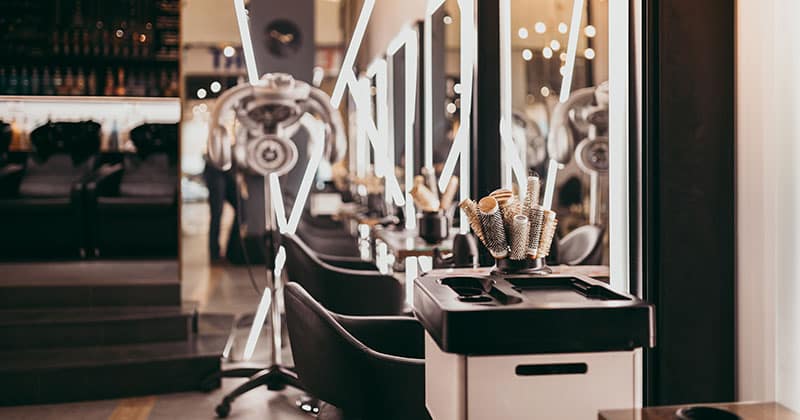
Salon Equipment Warranty and Service Plans: Why They Matter
One way to protect your investment—sometimes even with used equipment—is to get a warranty and/or service plan.
Malfunctioning salon equipment can cost you money in multiple ways. First, there’s the risk of having to shut down if a key piece, like your shampoo station, goes on the fritz. That’s money out the door.
Plus, there’s the possibility of an employee or customer getting injured. That could result in a workers’ compensation claim or even a lawsuit. Clearly, you want to avoid that.
What do you need to know about a warranty or service plan?
- How long is the agreement good for? Standard is usually one to two years for large furnishings, although the frame may be covered for up to 10 years. Some equipment, like top hair dryers, come with five-year, 10-year, or even lifetime coverage. Other electrical devices may only be under warranty for six months.
- What is covered under your agreement? Do you get maintenance at certain intervals? Will damaged or malfunctioning equipment be replaced with the exact same item?
- What is excluded under the warranty? Typically, things like tampering and abuse are not covered. Does skipping maintenance nullify the warranty?
- How easy is it to get a replacement part or item? You want urgent and immediate service, so you don’t have to lose business.
- How long has the company been in business? A warranty isn’t much good if the company providing it shutters its doors before you put it to use.
- What is the cost of a service plan? Do you pay this as a lump sum, annually, or monthly?
Equip Your Salon for Success with SalonBiz
Staying on top of equipment maintenance appointments and other essential tasks is easy when you use a software management solution like SalonBiz. With SalonBiz, you can:
- Let clients book services online 24/7
- Maintain a virtual appointment calendar
- Help customers check out with a POS system
- Integrate with SalonBiz Payments, our all-in-one payment solution
- Create marketing campaigns to grow revenue
- Manage your inventory and product ordering
- Connect clients, staff, and the business via apps
- Generate reports for metrics and financials
RELATED ARTICLE: Salon Client Retention Strategies
You will appreciate how simple it is to integrate the many facets of your business with SalonBiz. You take the time to shop carefully for salon equipment. Why not approach your total salon operation with the same level of organization and planning?
To see how SalonBiz can help set up your salon for ongoing success, book a demo today!
